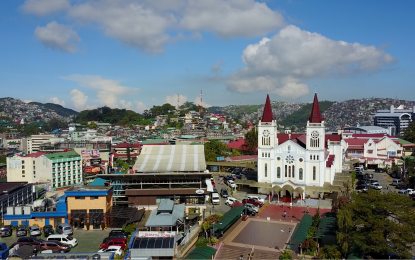
(PNA file photo)
BAGUIO CITY – This city's three-year El Niño Action Plan will focus on long-term preparations that are expected to make the local government and residents resilient to the effects of the weather phenomenon.
Louie Glenn Lardizabal, OIC of the City Disaster Risk Reduction Management Council (CDRRMC), in a phone interview on Monday said the three-year plan will take a whole-of-society approach from 2023 to 2026.
"We will do a full-blast information campaign. There will be an introduction on the use of technologies, installation of rainwater harvesting and water filtration facilities, shift to the use of solar powered-gadgets and others which will have a more long-term benefit,” Lardizabal said.
“It is a repeated phenomenon so, individually, we should be ready every time there is a declaration of El Niño and not prepare only when it is almost here," the official said.
He added that they have set strategic goals to enhance public awareness and preparedness, as well as strengthen water resource management.
The Environment Management Bureau of the Department of Environment and Natural Resources (EMB-DENR) earlier suggested that the city government urge establishments to utilize rainwater to address the water shortage.
“We want to empower the people and also revive what they already know,” Lardizabal said.
In the 1970s and 1980s, households in Baguio used to gather rainwater in pails from water spouts attached to the roof for general home use because of the limited supply from the utility company.
Over the years, however, the water utility drilled more water sources and was able to provide supply more frequently to some villages. With more residents connected to the water utility company, many residents slowly stopped the practice of rain harvesting.
“I am from Baguio, I grew up drinking water from the spout and it was safe. We used rainwater for everything- washing, cleaning, doing the laundry and even taking a bath. We can revive that practice so that the water does not go to waste,” Lardizabal said.
The Department of Science and Technology-Philippine Atmospheric, Geophysical and Astronomical Services Administration (DOST-PAGASA) reported that the El Niño season is from July to September this year until the first quarter of 2024.
El Niño is characterized by below-normal rainfall conditions that could bring negative impacts like dry spells and droughts in some areas of the country.
Lardizabal said that while the plan covers three years of implementation, it can be enhanced or updated as often as necessary. (PNA)
